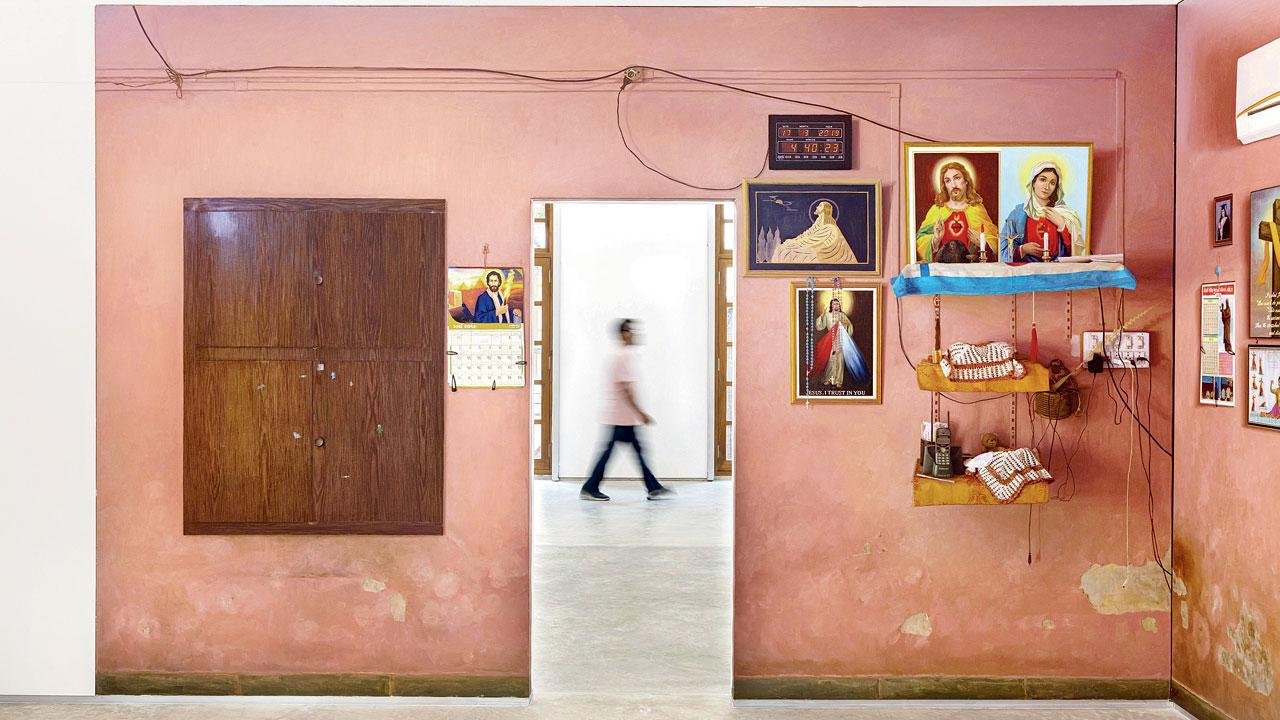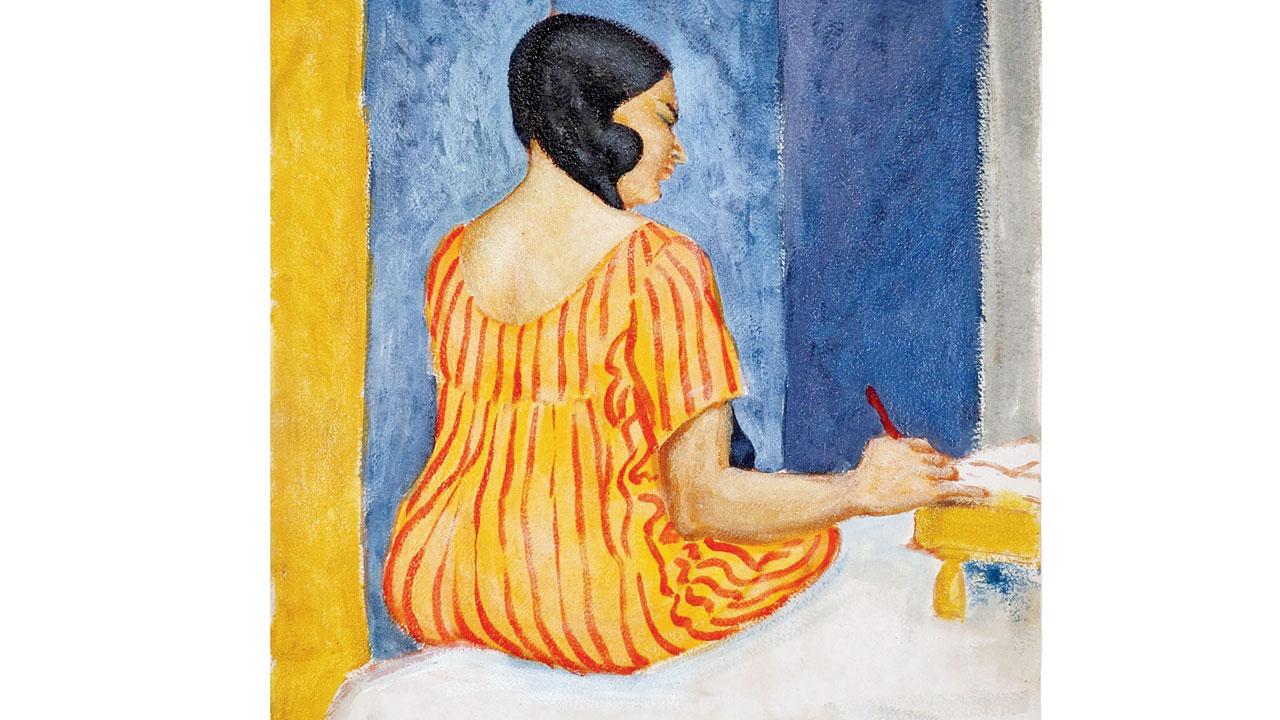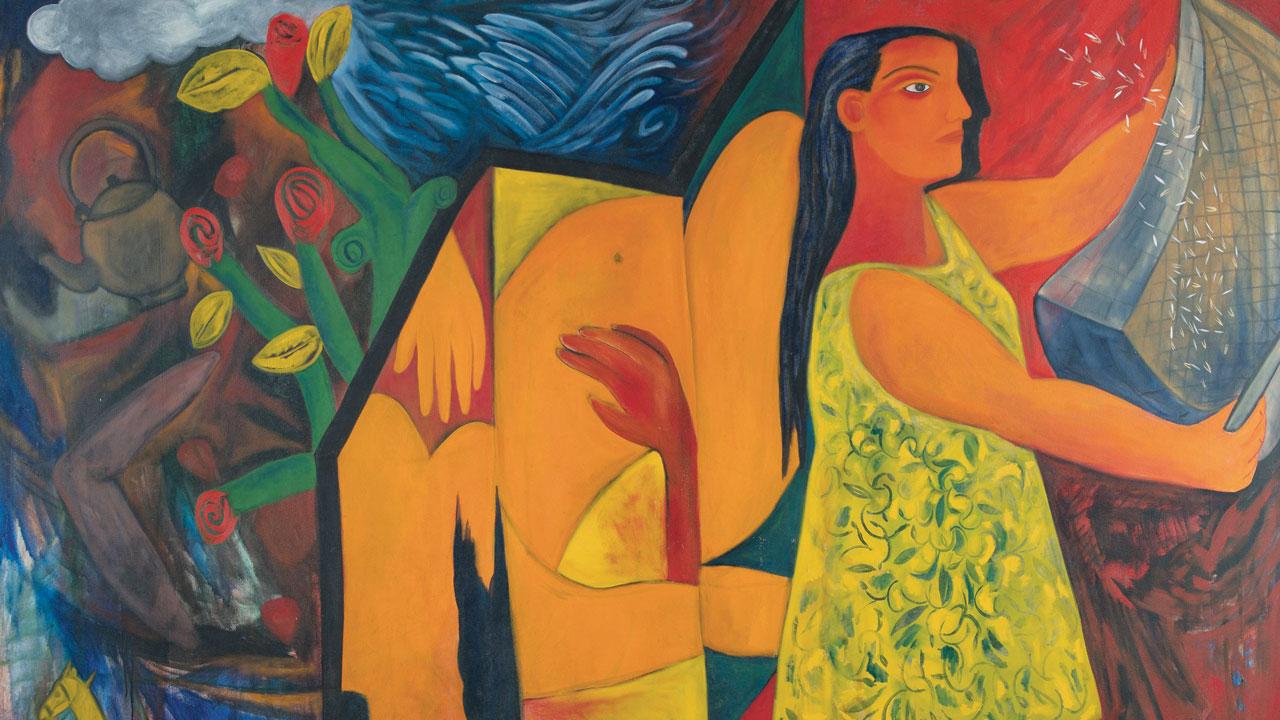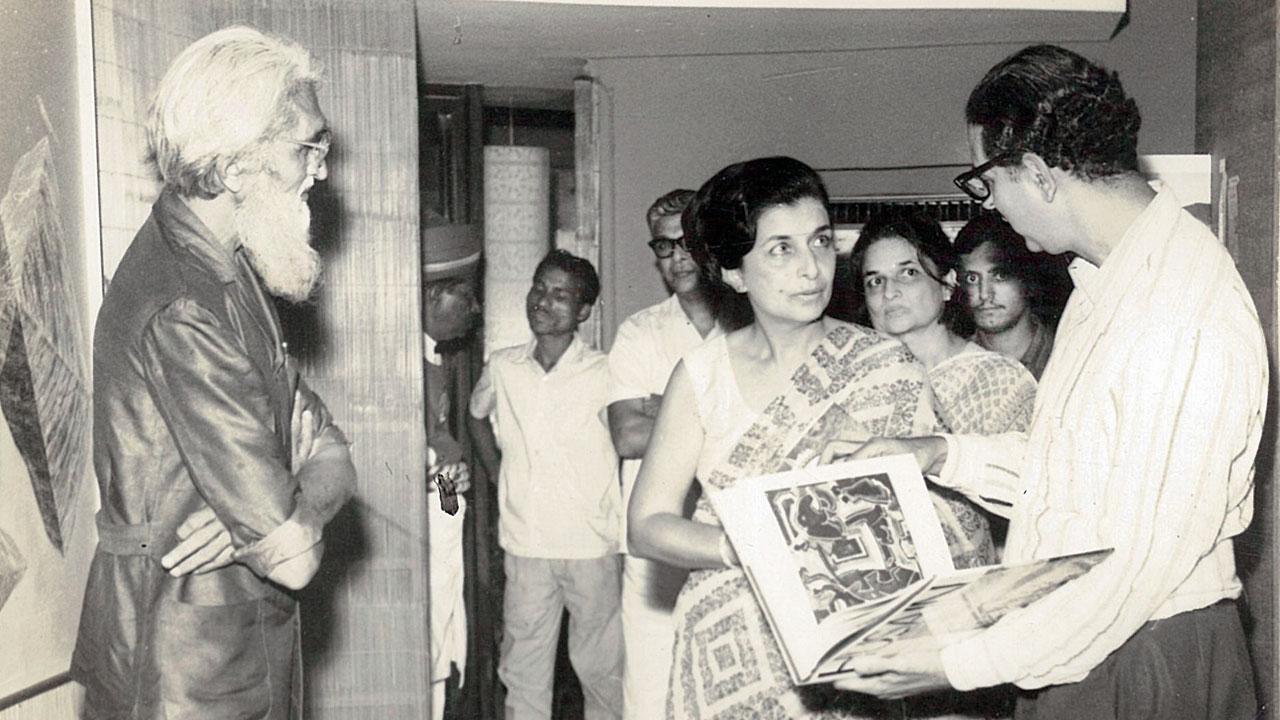From paintings that capture the chaos of middle-class homes to celebrating women artists and the 60-yr Chemould legacy, here’s our art roundup

From dusting cloths covering electronic items to myriad household objects jostling for space, Abir Karmakar aims to capture it all in his paintings, on display in Mumbai currently. PIC COURTESY/ GALERIE MIRCHANDANI + STEINRUECKE
The nuances that make a home
ADVERTISEMENT
Walking into an Indian home can be a sensorial experience with the objects amassed by each family member symbolising a time capsule ripe with sentimental stories and vibrant memories. A dusting cloth placed to cover the top of every electronic device or old cardboard boxes stacked haphazardly above every cupboard betray tales of an owner’s personality, living habits and idiosyncrasies. While for some, sifting through generations of clutter within drawers or a store room is akin to an archaeological excavation; for the common man, these pieces bring together an idea of home. Exploring this familiar domestic imagery of Indian homes, Baroda-based artist Abir Karmakar’s larger-than-life, photorealistic paintings spotlight the social and temporal quirks of modern India.
For his current show, Karmakar has selected two homes to paint. One is of a practising Christian joint family from Baroda and the other is a suburban home of a lone 80-year-old man. “His wife died a long time ago and his son has migrated to a different place. He lives alone, and you see time trapped within the belongings in his cabinets. It reminded me of my own father, who lives in Siliguri, and I’ve been living away from him in Baroda for the last 19 years,” he rues.
Presenting six double-sided paintings of domestic walls in a three-dimensional Trompe l’oeil style, Karmakar leaves the viewer suspended between frozen time and real space. He collapses boundaries between taking in and being, memory and presence, “to enhance the experience of seeing an artwork and becoming an active participant around it. You’re not distancing yourself from it, you’re physically moving into it. It creates a different meaning to the painting. At first, you’re walking into a stranger’s home, but you’re within an illusion—like a memory trapped within a photograph. It is not a reality anymore; and laden with layers and fragments of our own interpretation.”
Unlike most magicians, Karmakar reveals his trick to us: he regularly visits strangers’ homes across the country. “I visit several, but only paint a few. I look for surprises and things beyond my visit’s intention—something which brings new meaning to what I’m looking for. Since I cannot spend too much time in someone’s house, I capture it in photographs, going through them again and again once I’m in my studio. They tell me a lot of things that are then composed in my paintings,” he shares.
For many, the visual chaos of the objects depicted in the homes Karmakar paints can be chalked down to hoarding, which, he feels, comes from a lack of economic stability. “When you see this level of hoarding, it’s a sign of creating a sense of continuity with the past…the need to hold onto the past. It’s very psychological. In a middle-class home, where the family is so tied up with the stresses of day-to-day life, this gives them a sort of assurance.”
While the belongings in an Indian home showcase time in a non-linear way, with generations of memories and materiality co-existing all at once, Karmakar points out how, in urban spaces, everything feels quite homogeneous. “Nothing used in architecture is local anymore. Everything is imported or inspired by something imported. They’re losing their cultural and local identity. Be it in Kolkata, Delhi, Bombay, or even in Baroda, they’re all configured so similarly, I can’t tell I’m in a different city.”
WHAT: Passage by Abir Karmakar
WHERE: Galerie Mirchandani + Steinruecke, 101, 1st Floor, Commerce House, Ballard Estate
WHEN: September 14 to October 26; 11 AM-7 PM
CALL: 35098262
Harmony in a flux
Finding tranquillity in a chaotic world can feel elusive, but Akara Modern’s captivating new exhibition reveals harmony between movement and stillness. Exploring how action leads to meditative rest, the show journeys from kinetic vitality to introspective calm. While MF Husain’s horses epitomise vigorous energy through swift, expressionistic brushstrokes, Krishen Khanna’s rare abstract Man with Sitar fuses colour and gesture to convey creative momentum.

The River of Dreams, Oil and acrylic on canvas, 1994 by Rekha Rodwittiya. PIC COURTESY/DAG
In contrast, Manjit Bawa’s fragile figures, like a man inhaling a flower’s scent, exude vulnerability through spatial exploration and muted hues, while Sudhir Patwardhan attentively captures subjects’ essences through precise volumes and details. Devoid of humans, KH Ara and Reba Hore’s vase and furniture studies evoke permanence amidst impermanence, while Jeram Patel’s tools reflect his inventive creative process.
WHAT: Stillness In Motion
WHERE: Akara Modern, 1st floor, 4/5 Churchill Chambers, 32 Mereweather Road, Colaba
WHEN: Till September 15, 11 AM-6.30 PM
CALL: 7777096686
The story of art… with women
In an ongoing show, art institution and gallery DAG spotlights 10 pivotal women artists in 20th century India, who dabbled in a range of mediums and genres to carve unique creative identities despite prejudice and patriarchy. Their wide-ranging practices encompass early Indian abstraction, sculpture, printmaking and more.

The River of Dreams, Oil and acrylic on canvas, 1994 by Rekha Rodwittiya. PIC COURTESY/DAG
The ten showcased Indian modernists—Madhvi Parekh, Anupam Sud, Gogi Saroj Pal, Zarina Hashmi, Shobha Broota, Mrinalini Mukherjee, Devayani Krishna, Navjot, Rekha Rodwittiya and Latika Katt—made remarkable contributions, overcoming societal discouragement to pursue their passion. The show provides a survey of their diverse interests and multi-faceted approaches to art-making. Their stories reveal how women found A Place In The Sun—aptly being the title of the show—as modern artists in a male-dominated era.
WHAT: A Place in the Sun: Women Artists from 20th Century India
WHERE: DAG, The Taj Mahal
Hotel, Colaba
WHEN: September 9 to October 21; 11 AM-7 PM
CALL: 49222700
Archiving history
Following India’s independence in 1947, Indian gallerists Kekoo and Khorshed Gandhy founded Chemould Frames—a salon for artists of the time such as FN Souza, SH Raza and MF Husain, among others. In 1963, it grew into Gallery Chemould, on the first floor of Jehangir Art Gallery, till its relocation in 1988 by their daughter Shireen Gandhy to what is known today as Chemould Prescott Road.

MF Husain, Begum Ali Yavar Gang and Kekoo Gandhy at the opening of Swaminathan exhibition, 1971. PIC COURTESY/Chemould Archives
To mark the gallery’s diamond anniversary, an extensive archive, comprising over 15,000 items ranging from letters and mounted slides to stamps and telegrams, have been documented and curated by Shaleen Wadhwana for two shows. They serve as entry points into the gallery’s rich six-decade-long history of contemporary art. A first for an Indian gallery to archive its own extensive history.
WHAT: CheMoulding | Framing Future Archives
WHERE: Chemould Prescott Road, 3rd floor, Queens Mansion, Fort
WHEN: Part 1: Framing-September 15 to October 28; Part 2: Futuring- November 15 to
December 23; 10 AM-6 PM
CALL: 22000211
 Subscribe today by clicking the link and stay updated with the latest news!" Click here!
Subscribe today by clicking the link and stay updated with the latest news!" Click here!







